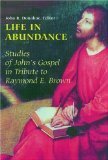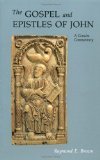Lee Harmon's Blog, page 139
February 5, 2011
Book review: Atoms & Eden
 by Steve Paulson
by Steve Paulson
★★★★★
If you really want to start an argument, ask a room full of physicists this question: Are the laws of physics fine-tuned to support life? This question and others are debated in Steve Paulson's collection of interviews. In the great "religion vs. science" debate, this is a meet-the-players book, from renowned atheists Sam Harris and Richard Dawkins to Roman Catholic John Haught to affirmed Muslim Nidhal Guessoum. En route, you'll talk with Karen Armstrong, Daniel Dennett, Ken Wilber, Robert Wright, Elaine Pagels, Paul Davies, Steven Weinberg, and more … 20 interviews in all, and these are big names!
These are some of our greatest thinkers, and none are closed-minded. You won't find anyone here who rejects the overwhelming evidence for evolution; Paulson purposefully excludes fringe theorists like "young earth" believers and intelligent design proponents, preferring to stay on the cutting edge of both science and religion. But what you will find here is an appreciation for today's mysteries, like consciousness.
There's another hot spot that's sure to start an argument: the whole mind-body question. It's very hard to figure out what's going on when you throw together 100 billion neurons and 100 trillion connections, but is our mind (in religious terms our soul) hidden in there? Surprisingly, the majority of our greatest thinkers punt on the subject, sometimes suggesting consciousness is a topic we'll never understand. As Dawkins says, "consciousness is … a very, very big problem."
I found the book fascinating and, of course, highly intelligent; the best of its kind I've read. This is not a book about accepting or rejecting a particular caricature of God, such as the Judeo-Christian God. It is about the big questions: Can consciousness survive after death? (atheist Sam Harris: "I just don't know.") Is human existence a lucky evolutionary accident? Does the universe have a purpose? Is faith evil or necessary?
Buy this one.
(click picture to buy on Amazon)
Published on February 05, 2011 08:26
February 4, 2011
Revelation 1:19
Write, therefore, what you have seen, what is now and what will take place later.
//Revelation begins with John experiencing a vision of the Son of Man in all his glory. When John saw him, he fell at his feet, as if dead. But Jesus touched John, and gave him three instructions:
1. Write about what you have already seen.2. Write about what is going on now.3. Write what is about to happen.
Those who subscribe to a purely futuristic interpretation of Revelation should have stopped reading a few words back. Not only is John instructed to write about the "past" and the "present," but he is soon promised the "future" will arrive in short order. Nowhere in Revelation is there any hint that its prophecies are written for a distant century.
So, which parts of Revelation were the past, which were the present (John's time) and which were about to happen? Maybe the answer is in chapter 11, verse 14:
The second woe has passed; the third woe is coming soon.
So there you have it: the fulcrum on which all of Revelation teeters between what has occurred and what is yet to come. Grab a pair of scissors now, and cut the book of Revelation in two along this verse. You'll have two manuscripts of about the same length: a history book, and a book of prophecy. Well, it's not that cut and dried, because Revelation skips forward and backward in time so often it's nearly impossible to follow, but you get the idea.
Unless you've been exposed to a historical-critical analysis of Revelation, this interpretation probably makes no sense at all. How can Revelation's horrors be half over? www.thewayithappened.com will make sense of it all, from the perspective of an historian, not an evangelist.
//Revelation begins with John experiencing a vision of the Son of Man in all his glory. When John saw him, he fell at his feet, as if dead. But Jesus touched John, and gave him three instructions:
1. Write about what you have already seen.2. Write about what is going on now.3. Write what is about to happen.
Those who subscribe to a purely futuristic interpretation of Revelation should have stopped reading a few words back. Not only is John instructed to write about the "past" and the "present," but he is soon promised the "future" will arrive in short order. Nowhere in Revelation is there any hint that its prophecies are written for a distant century.
So, which parts of Revelation were the past, which were the present (John's time) and which were about to happen? Maybe the answer is in chapter 11, verse 14:
The second woe has passed; the third woe is coming soon.
So there you have it: the fulcrum on which all of Revelation teeters between what has occurred and what is yet to come. Grab a pair of scissors now, and cut the book of Revelation in two along this verse. You'll have two manuscripts of about the same length: a history book, and a book of prophecy. Well, it's not that cut and dried, because Revelation skips forward and backward in time so often it's nearly impossible to follow, but you get the idea.
Unless you've been exposed to a historical-critical analysis of Revelation, this interpretation probably makes no sense at all. How can Revelation's horrors be half over? www.thewayithappened.com will make sense of it all, from the perspective of an historian, not an evangelist.
Published on February 04, 2011 06:58
February 3, 2011
Book review: Life In Abundance
 by John R. Donahue, Editor
by John R. Donahue, Editor★★★★★
I introduced Raymond Brown a couple books back as one of the most important theologians of the 20th century. A few years after his sudden death in 1998, St. Mary's Seminary and University in Baltimore hosted a conference titled "Life in Abundance," to follow Brown's lead in discussing the state of Johannine studies. This volume brings together presentations by scholars there.
Anyone who is a student of John's Gospel will recognize many of the contributors: Alan Culpepper, Robert Kysar, D. Moody Smith and more. The articles are grouped into four categories: [1] Johannine Studies: Challenges and Prospects, [2] Historical Context and the Gospel of John, [3] Johannine Theology, and [4] Interpreting the Work of Raymond Brown.
Brown, according to Culpepper, "represents an advance over both the skepticism of Bultmann (and more recently the Jesus Seminar) on the one hand and the conservatism of Dodd, Robinson, and later D.A. Carson on the other hand." For example, Brown originally accepted the traditional identification of the Beloved Disciple as John, son of Zebedee, but later changed his mind.
Brown entered the world of Johannine scholarship at the perfect time, it seems, just as the discovery of the Dead Sea Scrolls revealed a Jewish sect in first-century Palestine that expressed itself in much the same dualistic, exclusivistic terminology as John's Gospel. We no longer need to explain the Fourth Gospel in terms of Hellenistic or Gnostic thought, for we now know there were similar forms of Jewish thought contemporaneous with the birth of Christianity. When in verse 5:24, John explains that "those who hear and believe have entered eternal life and have passed from death to life," we can see traces of John's realized eschatology, without completely rejecting the future eschatology displayed in the verses immediately following. Life in abundance … both now and later.
This is a scholarly book, very good for those wanting to catch up on the latest thinking about John's Gospel. For that purpose, I give it five stars. If you're looking for inspirational reading, this is probably not the right book.
(click picture to buy on Amazon)

Published on February 03, 2011 06:30
February 2, 2011
Psalm 53:1
The fool says in his heart, "There is no God." //Please forgive me for taking a break from commentary to climb on my soapbox a moment. It's important to me to be tolerant of various religious beliefs, including atheism, so, naturally, this is not a verse I much appreciate. But I sure hear it a lot. The verse continues, They are corrupt, and their ways are vile; there is no one who does good. Reading this, it's hardly surprising that outspoken atheists Richard Dawkins and Sam Harris complain that atheists are unfairly despised. Yet, my forays into religious forums repeatedly run into a problem, and this is where atheism tends to develop its bad rep. In my observation, the angry and the derisive most commonly fall on the unbelieving side of the line (this should come as no surprise). The very angry are also the most vocal, as they spew venom at every pretense of religion. And, as if rejecting God provides license to do so, their ridicule is often spiced with childish vulgarities. They are corrupt, and their ways are vile; there is no one who does good. Nonsense, of course, and we all know better than to read verses like this out of context. The vast majority of atheists politely back up their reasonable beliefs (non-beliefs?) with a very well-developed moral responsibility to "do good" ... and we know it's an honest and sincere one, without the carrot of eternal reward. I'm certainly not insinuating that only atheists go on the offensive; regardless of religious affiliation, we can try to understand and befriend those who are hurting, without tolerating their methods. Just as peaceful Muslims must denounce the radicals of their religion, and progressive Christians must speak out against the inhumane teachings of certain fundamentalists, so must atheists calm down their own embarrassing contingent if they wish their non-beliefs to be respected.
Published on February 02, 2011 07:00
February 1, 2011
Book review: Jesus and Buddha, the Parallel Sayings
 by Marcus Borg
by Marcus Borg★★★★
Three thousand miles from where Jesus was born, another miraculous birth occurred: the Buddha. As the Buddha walked on water, passed through walls, and raised the dead, so did Jesus in his day. As the Buddha fed 500 with a few small cakes, so did Jesus work with loaves and fishes. Five hundred years after a terrible earthquake marked the death of the Buddha, the earth shook again when Jesus breathed his last.
Given the eerie parallels between these two lives, one naturally wonders if their teachings were also similar. In a book that is probably best read as a daily devotional, Borg provides a "Jesus" saying on the left side of each page, and a parallel "Buddha" saying on the right side. Here are some of my favorites:
Jesus: "There is nothing outside a person that by going in can defile, but the things that come out are what defile." Buddha: "Stealing, deceiving, adultery; this is defilement. Not the eating of meat."
Jesus: "Do not store up for yourselves treasure on earth, where moth and rust consume and where thieves break in and steal; but store up for yourselves treasures in heaven, where neither moth nor rust consumes and where thieves do not break in a steal." Buddha: "Let the wise man do righteousness: A treasure that others cannot share, which no thief can steal; a treasure which does not pass away."
Jesus: "Whoever blasphemes against the Holy Spirit can never have forgiveness, but is guilty of an eternal sin." Buddha: "Do not let there be a schism in the order, for this is a serious matter. Whoever splits an order that is united will be boiled in hell for an aeon."
What is going on, here? Were Jesus and Buddha spiritual masters inspired by a single cosmic source? Is the Christian "very God of very God" one with the Buddhist "God of gods?" You can't help but be inspired as you contemplate the similarities of these two great religious leaders.
(click picture to buy on Amazon)

Published on February 01, 2011 07:06
January 31, 2011
John 21:11
Simon Peter climbed aboard and dragged the net ashore. It was full of large fish, 153, but even with so many the net was not torn.
//Jesus, newly-resurrected, appears to his disciples as they are fishing in Galilee. He tells them to draw in the nets and cast them over the other side of the boat (it is not enough to skootch the boat over a little, or just turn it around) and when they do, they net 153 fish.
153? Who sat there and counted them all? What does this number signify? This is a question that has intrigued commentators since the early centuries of the church.
Add up all the integers from 1 to 17, and you get 153. Does that shed any light on the puzzle? Hmmm, probably not.
St. Augustine proposed that the number allegorically provides a symbol for the Trinity. But I can't follow his logic.
St. Jerome explains that there are 153 kinds of fish (such was the belief of Greek zoologists) so as "fishers of men" the apostles are learning to catch every kind of man.
If you've been following my posts about gematria and the number 666, you may wonder if similar numerical wordplay might describe the number 153. Yes, there have been several suggestions; the most likely being the Hebrew phrase "children of God," which sums to 153.
In the end, we're likely to never uncover John's hidden meaning. One more long-lost mystery of scripture.
//Jesus, newly-resurrected, appears to his disciples as they are fishing in Galilee. He tells them to draw in the nets and cast them over the other side of the boat (it is not enough to skootch the boat over a little, or just turn it around) and when they do, they net 153 fish.
153? Who sat there and counted them all? What does this number signify? This is a question that has intrigued commentators since the early centuries of the church.
Add up all the integers from 1 to 17, and you get 153. Does that shed any light on the puzzle? Hmmm, probably not.
St. Augustine proposed that the number allegorically provides a symbol for the Trinity. But I can't follow his logic.
St. Jerome explains that there are 153 kinds of fish (such was the belief of Greek zoologists) so as "fishers of men" the apostles are learning to catch every kind of man.
If you've been following my posts about gematria and the number 666, you may wonder if similar numerical wordplay might describe the number 153. Yes, there have been several suggestions; the most likely being the Hebrew phrase "children of God," which sums to 153.
In the end, we're likely to never uncover John's hidden meaning. One more long-lost mystery of scripture.
Published on January 31, 2011 06:35
January 30, 2011
Book review: The Gospel and Epistles of John
 by Raymond E. Brown
by Raymond E. Brown★★★
This book is now 23 years old, but it is one that every Bible scholar must read. Raymond Brown is considered by many to be the premier Johannine scholar of the 20th century, and is widely acknowledged by both the Church and by academia. Brown began writing about John and the Johannine community in 1960, culminating a quarter-century later in an exhaustive, 800-page tome on the epistles in 1982. This book brings it all together in one concise commentary. If you fancy yourself a Bible scholar but you don't have time to study all of Brown's works, you must at least read this short book.
You'll find in this book no comprehensive discussion of the Johannine community, of the development and authorship of the Gospel, or even of Johannine theology in general. You'll find very little about Brown's contributions to understanding Johannine eschatology or to the identification of the "beloved disciple." What you will get is a concise verse-by-verse commentary of the Gospel and epistles, which in itself provides a taste of Brown's thinking.
Scripture from the Revised New Testament is printed on the top of each page, with Brown's commentary on the bottom half. Because it's a summary only, providing nothing new or provocative, I have a hard time granting it more than three stars, yet it is a must-read.
(click picture to buy on Amazon)
Published on January 30, 2011 07:59
January 29, 2011
John 19:30
When he had received the drink, Jesus said, "It is finished." With that, he bowed his head and gave up his spirit.
//I've quoted the NIV translation of this verse, but a more accurate translation is Jesus "handed over" his spirit. This is a very different picture than the other Gospels, and this is a key verse to understanding Johannine theology. What or who is the spirit, and who is it handed over to?
Is it the soul of Jesus, going back to God? Not likely; the Jews understood that the soul would hang around the body for three days, before death is recognized as certain. John follows this understanding; Mary appears to witness the soul ascending to heaven (as did the souls of all martyrs) after the third day.
Is it the Holy Spirit? Most interpreters assume the Holy Spirit is the Johannine equivalent of the Paraclete, or the comforter. But the comforter will not make his appearance until the evening of the resurrection, where it appears magically behind locked doors in the presence of the disciples.
Earlier in John, at the beginning of Jesus' ministry, a "spirit" settled upon Jesus like a descending dove. Perhaps this was a gift of the eternal light/love/life; that which was "before Abraham," that which was "with God in the beginning." Is it now ascending back like a dove to where it came from, bookending the earthly life of Jesus with its arrival and departure? But it doesn't appear to be going anywhere; it is "handed over," possibly to the "beloved disciple," whom John commissions to take care of his mother.
Today, we naturally interpret the writings of John in the light of our own theology, which is a composite of all the Gospel stories. But what did John mean, 2,000 years ago? Why must John write so mysteriously? I'll be probing these questions and more in my upcoming book about John's Gospel.
//I've quoted the NIV translation of this verse, but a more accurate translation is Jesus "handed over" his spirit. This is a very different picture than the other Gospels, and this is a key verse to understanding Johannine theology. What or who is the spirit, and who is it handed over to?
Is it the soul of Jesus, going back to God? Not likely; the Jews understood that the soul would hang around the body for three days, before death is recognized as certain. John follows this understanding; Mary appears to witness the soul ascending to heaven (as did the souls of all martyrs) after the third day.
Is it the Holy Spirit? Most interpreters assume the Holy Spirit is the Johannine equivalent of the Paraclete, or the comforter. But the comforter will not make his appearance until the evening of the resurrection, where it appears magically behind locked doors in the presence of the disciples.
Earlier in John, at the beginning of Jesus' ministry, a "spirit" settled upon Jesus like a descending dove. Perhaps this was a gift of the eternal light/love/life; that which was "before Abraham," that which was "with God in the beginning." Is it now ascending back like a dove to where it came from, bookending the earthly life of Jesus with its arrival and departure? But it doesn't appear to be going anywhere; it is "handed over," possibly to the "beloved disciple," whom John commissions to take care of his mother.
Today, we naturally interpret the writings of John in the light of our own theology, which is a composite of all the Gospel stories. But what did John mean, 2,000 years ago? Why must John write so mysteriously? I'll be probing these questions and more in my upcoming book about John's Gospel.
Published on January 29, 2011 08:01
January 28, 2011
Book review: I Sold My Soul on eBay
 by Hemant Mehta
by Hemant Mehta★★★★★
Mehta is "the eBay atheist," the nonbeliever who auctioned off the opportunity for the winning bidder to send him to church. Since then, Mehta has visited a variety of churches, from the cozy to the mega churches, and written about his experiences.
If you're looking for comedy, this is not. The subtitle is "Viewing faith through an atheist's eyes," and Mehta, who stopped believing as a teenager, never crosses back over the line.
He begins his book by explaining what it is the nonreligious believe. He touches on prayer, suffering, child raising, and points out that atheism is not merely the denial of a supernatural being; it is a lifestyle. Then he narrates his journey from church to church, describing the events, the rituals, the music and more from an outsider's viewpoint. At the conclusion of the book, Mehta offers suggestions for making the church experience more attractive and how to reach out to unbelievers.
What would it take for Mehta to become a believer? A miracle. A real miracle, not some "God helped me find a roommate" type of miracle. And I suspect Hemant speaks for a great number of atheists.
In a recent forum, someone made the statement that the believer will never understand the atheist's mind, and the atheist will never understand the believer's mind. I'm not sure I entirely agree, because many people grow from believers into atheists and vice versa. But the typical Christian suggestion that atheists work to suppress an inherent belief in God is no more true than the atheist idea that Christians are easily deluded. I have met many incredibly intelligent people on both sides of the line. Mehta's book bridges the gap and breaks down the stereotypes.
(click picture to buy on Amazon)
Published on January 28, 2011 06:27
January 27, 2011
Revelation 13:18
This calls for wisdom. If anyone has insight, let him calculate the number of the beast, for it is a man's number. His number is 616.
//No, this isn't a repeat. No, this isn't a typo.
Two days ago, I introduced the beastly number 666, and why first-century Christians immediately recognized it as referring to Nero Caesar. But if you look in the margin of your Bible, you may find something interesting: many early manuscripts of Revelation record the number of the beast as 616, not 666! Why?
Yes, John's puzzle was easily cracked, and Nero's role in Revelation was well-known in the first and second century (and actually, well into the fifth century). But as more and more Latin speaking Christians entered the fold, the puzzle no longer made sense. Neron Caesar, written in Hebrew, is spelled NRWN QSR. But the Latin pronunciation is Nero Caesar, NRW QSR. A 50-point letter is dropped, and the sum becomes 616. So what did the copyists do? They began changing scripture from 666 to 616!
Luckily, it didn't take, and we're back to the original 666. I'm glad; 666 just looks and sounds so much more ... appropriately evil.
//No, this isn't a repeat. No, this isn't a typo.
Two days ago, I introduced the beastly number 666, and why first-century Christians immediately recognized it as referring to Nero Caesar. But if you look in the margin of your Bible, you may find something interesting: many early manuscripts of Revelation record the number of the beast as 616, not 666! Why?
Yes, John's puzzle was easily cracked, and Nero's role in Revelation was well-known in the first and second century (and actually, well into the fifth century). But as more and more Latin speaking Christians entered the fold, the puzzle no longer made sense. Neron Caesar, written in Hebrew, is spelled NRWN QSR. But the Latin pronunciation is Nero Caesar, NRW QSR. A 50-point letter is dropped, and the sum becomes 616. So what did the copyists do? They began changing scripture from 666 to 616!
Luckily, it didn't take, and we're back to the original 666. I'm glad; 666 just looks and sounds so much more ... appropriately evil.
Published on January 27, 2011 06:46



